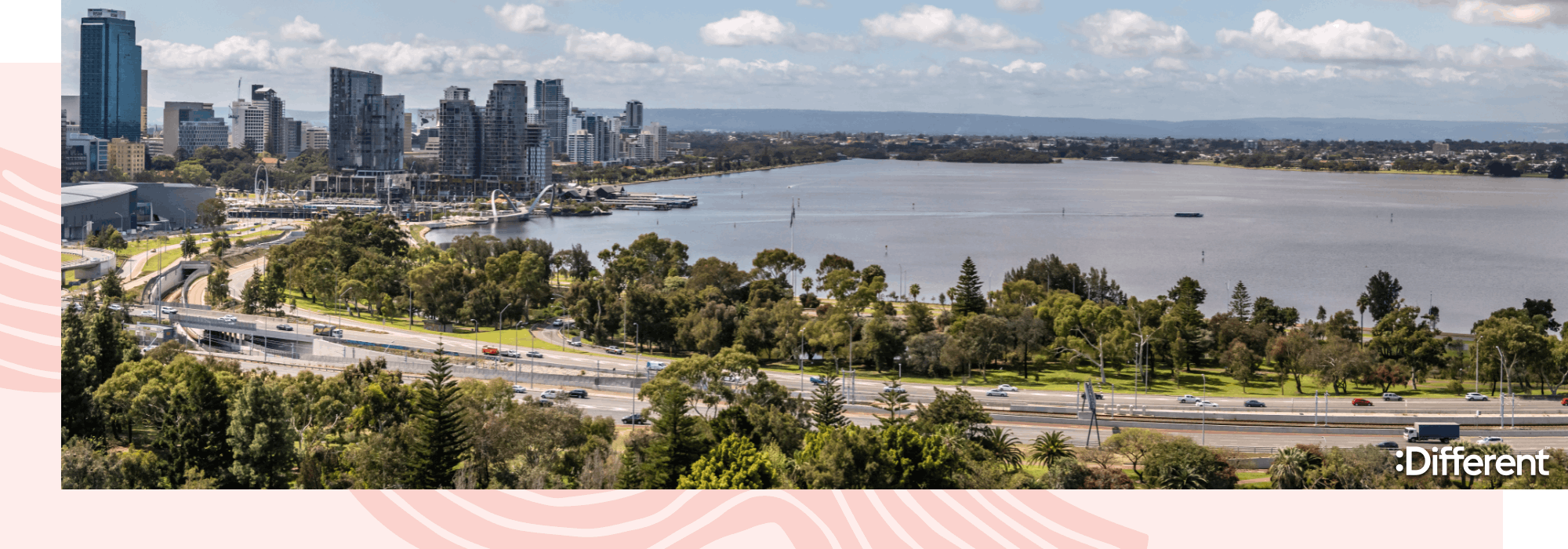Western’s Australia’s capital city, Perth, is a stunning fusion of lakesides and beaches. With its eclectic landscape, Perth’s prominence for the rental market cannot be ignored.
The rental market trends in Perth show growth, favouring rental property owners. Since 2019, the city has experienced a boom in the rental market, supported by multiple factors playing out well in 2020.
According to a Domain rental report, the short term travel market has opened up. This has also contributed to a high average rent in Perth, Australia.
In this article we'll break down the rental landscape in Perth, how rental trends have changed since the last 5 years and some prolific suburbs.
What is the average rent in Perth?
The average rent in Perth per week is $395 for houses and $340 for units, according to a Domain rental report (September 2020).
This is a 5.3% increase for units since the previous quarter, while house rental prices have changed by 0%.
Average rent in Perth over the past 5 years
Thanks to greater interstate migration, extension of leases and lower investor activity has shrunken the supply of rental properties. As a result, rental prices shot upwards for Perth in 2020.
Another reason was the deflation in the mining boom, which resulted in a fall in investor activity.
Finally, the supply of rental properties reduced. Meanwhile, families and retirees preferred longer-term rental options, yet again affecting demand.
As numbers below indicate, 2018 was a market recovery period while 2017 was when Perth’s rental market wasn't performing too well. Great for renters, but not so great for property owners. At this time, rent only took up 19% of a renter's average weekly income!
Over the 5 year period, Perth’s rental market has transformed to a great extent.
Median rent in Perth for houses from the past 5 years (2016-2020):
The average weekly rent for houses rose from $370 to $420 between 2019 and 2020. Prior to that, the changes were not as steep.
- Perth median weekly house rent 2020: $420
- Perth median weekly house rent 2019: $370
- Perth median weekly house rent 2018: $365
- Perth median weekly house rent 2017: $360
- Perth median weekly house rent 2016: $380
Source: Rent.com.au rental snapshot.
Median rent in Perth for units from the past 5 years (2016-2020):
Unit rental prices also show the largest increase within the past year compared to the last 5 years.
- Perth median weekly unit rent 2020: $365
- Perth median weekly unit rent 2019: $330
- Perth median weekly unit rent 2018: $320
- Perth median weekly unit rent 2017: $300
- Perth median weekly unit rent 2016: $330
Source: Rent.com.au rental snapshot.
Top 10 growth suburbs in Perth
Peppermint Grove is currently the fastest growing suburb, specifically for houses.
According to the Domain rental report, this unprecedented rise in the average rent in Perth is driven by lower investor activity.
Rank | Suburb | Average weekly rent | Annual change |
|---|---|---|---|
1 | Peppermint Grove | $995 | 25.9% |
2 | Mount Claremont | $800 | 23.1% |
3 | Applecross | $400 | 21.2% |
4 | Kallaroo | $538 | 19.4% |
5 | Swanbourne | $600 | 18.8% |
6 | Connolly | $530 | 17.8% |
7 | Churchlands | $400 | 17.6% |
8 | Mosman Park | $650 | 17.1% |
9 | Wembley Downs | $680 | 13.3% |
10 | Gwelup | $700 | 12.9% |
Source: Domain Rental Report, September 2020.
Top 10 suburbs with highest weekly rent in Perth
The highest median weekly rent is $995 for houses in Peppermint Grove, closely followed by Mount Claremont at $800 and Gwelup at $700.
Rank | Suburb | Average weekly rent | Annual change |
|---|---|---|---|
1 | Peppermint Grove | $995 | 25.9% |
2 | Mount Claremont | $800 | 23.1% |
3 | Gwelup | $700 | 12.9% |
4 | Wembley Downs | $680 | 13.3% |
5 | Mosman Park | $650 | 17.1% |
6 | Swanbourne | $600 | 18.8% |
7 | North Coogee | $550 | -12.0% |
8 | Kallaroo | $538 | 19.4% |
9 | Connolly | $530 | 17.8% |
10 | West Leederville | $520 | -3.7% |
Source: Domain Rental Report, September 2020.
Future projections for average rental price in Perth
The data depicts a strong growth in the rental market for demand and prices. This may continue well into the next year. Low mortgage rates and government incentives exist in the market, which may benefit property investors eager to capitalise on the rising rental market trend.
Meanwhile, Domain property experts suggest to lock-in short leasing contracts as property owners can increase the rates as market rental prices increase further.
In short, what tenants think of rental prices compared to any mortgage obligations they may have to pay can tilt the future rental market in either direction.
Disclaimer: The views, information, or opinions expressed in this blog post are for general information purposes only and should not be relied upon. We have not taken into account specific situations, facts or circumstances, and no part of this blog post constitutes personal financial, legal, or tax advice to you. You should seek tax advice from your accountant, specific to your situation.

.png?ixlib=gatsbyFP&auto=compress%2Cformat&fit=max&rect=0%2C0%2C4000%2C1400&w=700&h=245)

